|
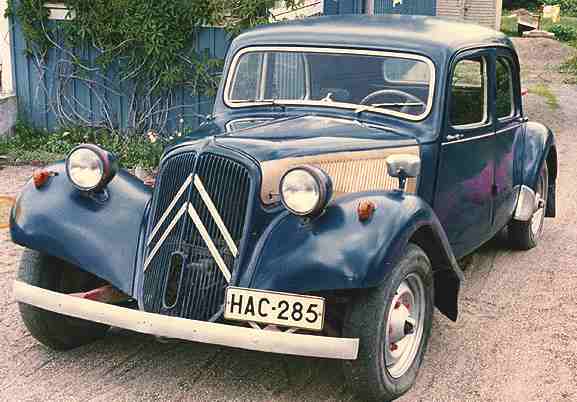
CitroŽn is a French automobile manufacturer, founded in 1919 by Andrť CitroŽn. It is today part of PSA Peugeot CitroŽn, and its headquarters is on rue Fructidor, Paris.
Originally a mass-market car maker with relatively straightforward designs, CitroŽn shocked the world in 1934 with the innovative Traction Avant, the world's first mass-production front wheel drive car (1934-56). Significant models include the H Van (1947-81, "HY"), the 2CV (1948-90, "The Duck"), the DS (1955-1975, "Goddess") and the CX (1974-91).
CitroŽn is a French automobile manufacturer, founded in 1919 by Andrť CitroŽn. It is today part of PSA Peugeot CitroŽn, and its headquarters is on rue Fructidor, Paris.
Originally a mass-market car maker with relatively straightforward designs, CitroŽn shocked the world in 1934 with the innovative Traction Avant, the world's first mass-production front wheel drive car (1934-56). Significant models include the H Van (1947-81, "HY"), the 2CV (1948-90, "The Duck"), the DS (1955-1975, "Goddess") and the CX (1974-91).
History
- Early years
The Eiffel Tower served as a billboard for CitroŽn from 1925 to 1934.Andrť CitroŽn built armaments for France during World War I and after the war he had a factory and no product. In 1919, the business started to produce automobiles, beginning with the conventional type A.
CitroŽn was a keen marketer - he used the Eiffel Tower as the world's largest advertising sign, as recorded in the Guinness Book of
Records. He also sponsored expeditions in Asia
(CroisiŤre Jaune) and Africa (CroisiŤre Noire), intended to demonstrate the potential for motor vehicles equipped with the Kťgresse track system to cross inhospitable regions. The expeditions conveyed scientists and journalists.
In 1924, CitroŽn began a business relationship with American engineer Edward G. Budd. From 1899, Budd had worked to develop stainless steel bodies for railroad cars, for the Pullman in particular. Budd went on to manufacture steel bodies for many automakers, Dodge being his first big auto client. In 1928, CitroŽn introduced the first all-steel body in
Europe.
The cars were initially successful in the marketplace, but soon competitors (who were still using a wooden structure for their bodies), introduced new body designs. CitroŽn did not redesign the bodies of his cars. CitroŽns still sold in large quantities in spite of not changing the body design, but the car's low price was the main selling point and CitroŽn experienced heavy
losses.
In an attempt to remedy the situation, CitroŽn developed the Traction
Avant. The Traction Avant had three revolutionary features: a unitary body with no separate frame, front wheel independent suspension, and front wheel drive. CitroŽn commissioned Budd to create a prototype, which evolved into the 7 horsepower (CV), 32 HP Traction Avant of 1934.
In 1933, CitroŽn also introduced the Rosalie, a passenger car with the worldís first commercially available
diesel engine developed with Harry Ricardo.
The Michelin era
Achieving quick development of the Traction Avant and its production facilities at the same time was too costly and overly ambitious, causing the financial ruin of the company. In 1934, debt forced the company into foreclosure and it was then taken over by its biggest creditor, the tire company Michelin. Fortunately for Michelin, the Traction Avant met with market acceptance and the basic philosophy that had led to this design continued.
CitroŽn has always been undercapitalized, so its vehicles have a tradition of being underdeveloped at launch, with limited distribution and service networks. For both the important DS and CX models, development of the original engine around which the design was planned proved too expensive for the finances available, and the actual engine used in both cases was a modest and outdated four-cylinder design.
During the German occupation of France in World War II, CitroŽn researchers continued their work in secret and developed the concepts that were later brought to market in the 2CV and DS. These were widely regarded by contemporary journalists as avant garde, even radical, solutions to automotive design.
This began a period of unusual brand loyalty, normally seen in the automobile industry only in niche brands, like Porsche and Ferrari. The cult-like appeal of the cars to CitroŽnistes took almost two decades to fade, from 1975 to about 1995.
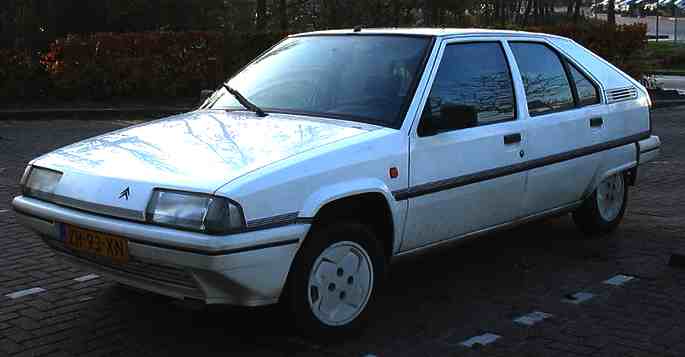
CitroŽn unveiled the 2CV (2 fiscal horsepower, initially only 12 HP) at the Paris Salon in 1948. The car became a bestseller, achieving the designer's aim of providing rural French people with a motorized alternative to the horse. This car remained in production, with only minor changes, until 1990 and was a common sight on French roads until recently.
1955 saw the introduction of the DS, the first full usage of CitroŽn's now legendary hydropneumatic self-levelling suspension system that was tested on the rear suspension of the last of the Tractions. The DS was the first European production car with disc brakes.
The DS featured power steering, power brakes and power suspension, and - from 1968 - directional headlights. A single high-pressure system was used to activate pistons in the gearbox cover to shift the gears in the transmission and to operate the clutch on the Citromatic, CitroŽn's semi-automatic transmission.
This high-pressure hydraulic system would form the basis of many CitroŽn cars, including the SM, GS, CX, BX, XM, and Xantia. These vehicles shared the distinguishing feature of rising to operating ride height when the engine was turned on, like a "mechanical camel" (per Car & Driver magazine). A lever located just ahead of the driver's door allowed the driver to adjust the height of the car. On right-hand drive models, this lever was located behind the driver's right foot. The height-adjustability of the suspension allowed for clearing obstacles, fording shallow (slow-moving) streams, and changing tires. This type of suspension was uniquely able to absorb road irregularities without disturbing the occupants.
During CitroŽn's venture with Maserati, the CitroŽn high-pressure hydraulic system was used on several Maserati models, for power clutch operation (Bora), power pedal adjustment (Bora), pop-up headlights (Bora, Merak), brakes (Bora, Merak, Khamsin), steering (Khamsin), and the entire Quattroporte II prototype, which was a four-door CitroŽn SM under the skin.
CitroŽn was one of the early pioneers of the now widespread trend of aerodynamic automobile design, which helps to reduce fuel consumption and improve high-speed performance by reducing wind resistance. The firm began using a wind tunnel in the 1950s.
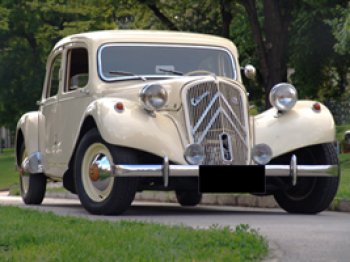
Financial restructuring
In 1963, CitroŽn negotiated with Peugeot to cooperate in the purchase of raw materials and equipment. Talks were broken off in 1965.
That year CitroŽn took over the French carmaker Panhard in the hope of using Panhard's expertise in midsize cars to complement its own range of very small, cheap cars (e.g., 2CV/Ami) and large, expensive cars (e.g., DS/ID). Cooperation between both companies had begun 12 years earlier, and they had agreed to a partial merger of their sales networks in 1953. Panhard ceased making vehicles in 1967.
1968 saw a restructuring of CitroŽn's worldwide operations under a new holding company, CitroŽn SA. Michelin, CitroŽn's long-time controlling shareholder, sold a 49% stake to FIAT, in what was referred to as the PARDEVI agreement (Participation et
Dťvelopement Industriels).
That year CitroŽn purchased the Italian sports car maker Maserati and launched the grand tourer SM, which featured a V6 Maserati engine and a fully powered steering system called DIRAVI. The SM was engineered as if it were replacing the DS, a level of investment the GT sector alone would never be able to support, even in the best of circumstances. Circumstances became more unfavorable as the 1970s progressed. CitroŽn suffered another financial blow in the 1973 energy crisis. In 1974, the carmaker withdrew from North America, due to design regulations that outlawed core features of CitroŽn cars.
Huge losses at CitroŽn were caused by failure of the Comotor rotary engine venture, plus the strategic error of going the 15 years from 1955 to 1970 without a model in the profitable middle range of the European market, and the massive development costs for the GS, CX, SM, Birotor, Maserati Bora, Maserati Merak, and Maserati Khamsin models - each a technological marvel in its own right.
The PSA era
CitroŽn was weak and unable to withstand the softening of the automobile market that accompanied the 1973 oil crisis. That year FIAT withdrew from PARDEVI and returned its 49% stake to Michelin. This was an ominous sign of things to come and, less than a year later, CitroŽn went bankrupt. The French government feared large job losses and arranged talks between Michelin and Peugeot, in which it was decided to merge Automobiles CitroŽn and Automobiles Peugeot into a single company. In 1974, Peugeot purchased 38.2% of CitroŽn and became responsible for managing the combined activities, in particular their research, purchasing, and investments departments.
Peugeot sold off Maserati to DeTomaso in May 1975, and the Italian firm was quickly able to exploit the aspirational image of the Maserati brand to sell tens of thousands of newly-designed Bi-Turbo models.
The takeover was completed in May 1976, as Peugeot SA purchased a 90% stake of CitroŽn SA and the companies were combined into a holding company, known as PSA Peugeot CitroŽn.
The PSA venture was a financial success from 1976 to 1979. CitroŽn had two successful new designs in the market at this time (the GS and CX), a resurgent CitroŽn 2CV, and the CitroŽn Dyane in the wake of the oil crisis, and Peugeot was typically prudent in its own finances, launching the Peugeot 104 based CitroŽn Visa and CitroŽn LNA. PSA then purchased the aging assets of Chrysler
Europe, which it rebranded as Talbot, leading to losses from 1980 to 1985.
PSA gradually eliminated CitroŽn's ambitious attitude to engineering and styling in an effort to rebrand the marque as an economy brand. In the 1980s, CitroŽn models were increasingly Peugeot-based, which was part of a worldwide motor industry trend called "platform sharing." The 1982 BX used the
hydro-pneumatic suspension system and still had a CitroŽnesque appearance, while being powered by Peugeot-derived engines and using the floorpan later seen on the Peugeot 405. By the late 1980s, many of the distinctive features of the marque had been removed or diluted - the AX GT, for example was noted by contemporary journalists for its poor ride quality, an unusual attribute for the
brand.
CitroŽn has expanded into many new geographic markets. In the late 1970s, the firm developed a small car for production in Romania known as the Oltcit, which it sold in Western Europe as the CitroŽn Axel. That joint venture has ended, but a new one between PSA and Toyota is now producing cars like the CitroŽn C1 in the Czech Republic. In China, the C3 and Xsara are sold alongside the Fukang and Elysťe local models. CitroŽn is still a global brand except in North America, where the company has not returned since the SM was effectively banned in 1974 for not meeting NHTSA bumper regulations.
The ubiquitous and versatile 2CV workhorse was finally killed off in 1990, without replacement. Companies like Chrysler with the CCV concept car, Toyota with the Scion xB and Honda with the Element have recognized the 2CV concept and translated it to the modern era. More recently, CitroŽn has introduced the C3 Pluriel, an unusual convertible with strong allusions to the 2CV, both in body style (such as the bonnet) and in its all-round practicality. A "retro style" C3-based, post-modern 2cv like the new VW Beetle and BMW MINI is under active consideration by CitroŽn.
The Pluriel is but one example of CitroŽn's return to innovation, after launching somewhat dull (although efficient) models throughout the 1990s. Other examples are the C2, C4, and C6. The introduction of newer models, such as the long-awaited CX replacement, the C6, indicates CitroŽn's continued commitment to innovation in the 21st century. But the days of clean-sheet thinking and truly radical innovation are long gone. Being too avant-garde and too far ahead of public taste is too risky.
In 2003, CitroŽn sold 1,372,500 cars, according to the PSA Peugeot CitroŽn group's 2003 annual report.
Citroen
Berlingo | C1
| C2
| C3
| C5
| C6
| Citroen
Picasso C4
LINKS
and REFERENCE
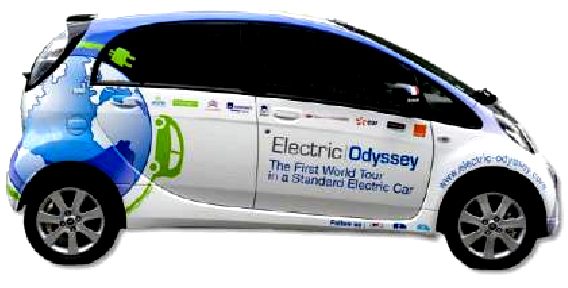
REFUELING
- Any
form of electric vehicle is better than petrol or diesel, but an
electric vehicle that can refuel in a few minutes will obviously have
much more customer appeal than an EV that has to wait 30 minutes or
even hours to charge up.
Battery
technology is improving daily. A car with the new generation of
battery cartridge exchange built in and the ability to load its own
cartridge, will encourage energy companies to build service
forecourts.
The
Blueplanet Ecostar (BE3) LSR Team would be pleased to advise any
energy company interested in this technology and of course any vehicle
manufacturer who might be considering whether or not to include a
future proof system into their next generation of road cars.
Please
click on the links above to find out about these famous automotive
makers. If your company is not included and you would like to be
listed, please let us know.
UK
VEHICLE INSURANCE ONLINE A - Z
No
matter what car, van or bike you drive, we're all looking for great
value and quality in our UK motor insurance? But who is the best
- who is the cheapest and who offers the great service in the event of
a claim?
See
the insurance companies below who claim to offer competitive cover at
sensible prices, our
guide to the jargon and tips for cutting your quote - Good
Luck:-
Automotive
Prehistory Links
CONTACTS
A
taste for adventure
capitalists
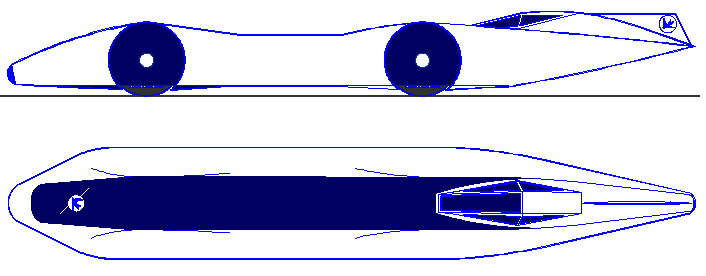
The
world's fastest electric car: 350mph + using energy from nature.
Featuring built in battery cartridge exchange, charged using renewable
solar energy. Sponsors sought for the 2016 season.
|





